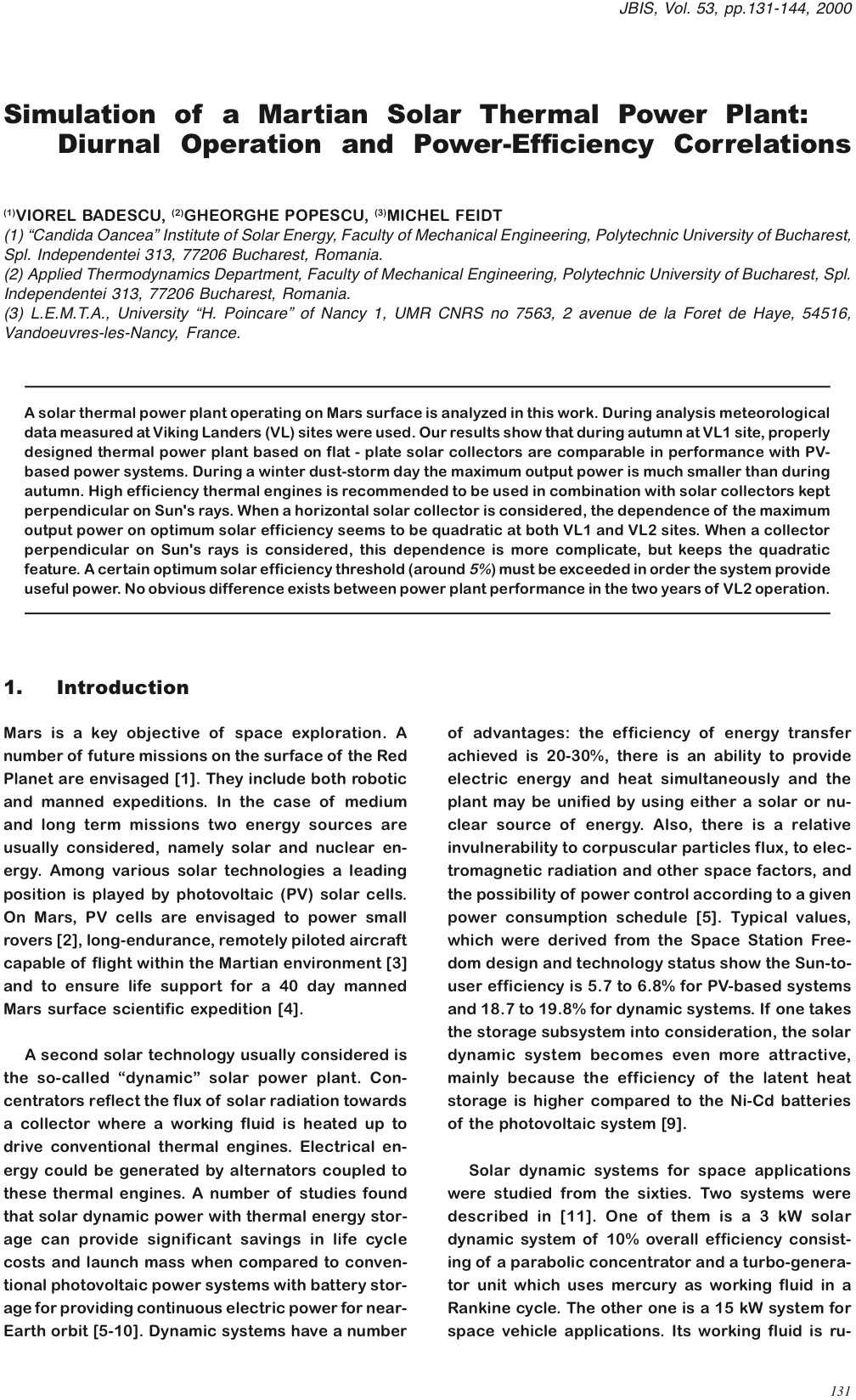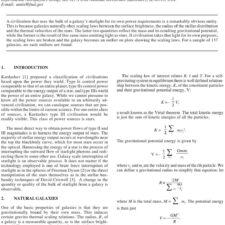Simulation of a Martian Solar Thermal Power Plant – Diurnal Operation and Power-Efficiency Correlations
£5.00
V. Badescu; G. Popescu; M. Feidt (2000), JBIS, 53, 131-144
Refcode: 2000.53.131
Abstract:
A solar thermal power plant operating on Mars surface is analysed in this work. During analysis meteorological data measured at Viking Landers (VL) sites were used. Our results show that during autumn at VL1 site, properly designed thermal power plant based on flat – plate solar collectors are comparable in performance with PV- based power systems. During a winter dust-storm day the maximum output power is much smaller than during autumn. High efficiency thermal engines is recommended to be used in combination with solar collectors kept perpendicular on Sun’s rays. When a horizontal solar collector is considered, the dependence of the maximum output power on optimum solar efficiency seems to be quadratic at both VL1 and VL2 sites. When a collector perpendicular on Sun’s rays is considered, this dependence is more complicate, but keeps the quadratic feature. A certain optimum solar efficiency threshold (around 5%) must be exceeded in order the system provide useful power. No obvious difference exists between power plant performance in the two years of VL2 operation.





